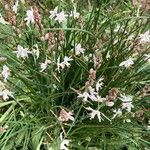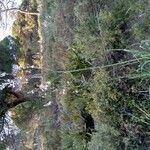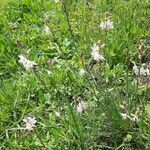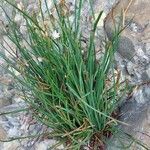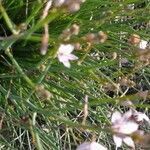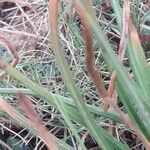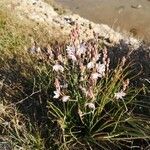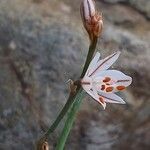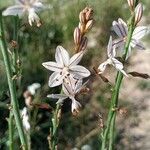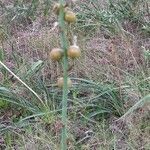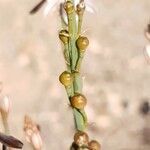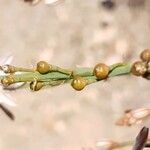Short-lived perennial, roots fleshy-fibrous. Leaves densely tufted, linear, 12-25 cm × 2-4 mm, fleshy, striate, hollow, semicylindric to ± trigonous, finely scabrid. Scape simple or branched, 20-60 cm high, firm. Racemes to 20 cm long, lax; pedicels erect, articulate at middle, bract acuminate. Flowers c. 1 cm long, 2 cm diam., white or pale pink; segments spreading, each with a conspicuous green or purple median vein. Staminal-filaments dilated and ciliate at base. Capsule c. 5 × 5 mm, retuse, valves with few large transverse furrows. Seeds c. 3.5 mm long, fusiform-trigonous, black.
A herb which keeps growing from year to year. It is erect. It can be 60 cm high. The leaves near the base are long, hollow and like a cylinder. The flowering stems are round and hollow. The flower buds are pink. The open flowers are pink to white. There are 6 petals and orange coloured anthers. The fruit is a wrinkled capsule. It contains 3-6 black wrinkled seeds which are triangle shaped.
Tufted annual to 50 cm; roots fibrous. Leaves many, semi-terete, hollow, ± undulate. Flowers in a panicle with ascending branches, nodding, pale pinkish white. Fruits subglobse.
